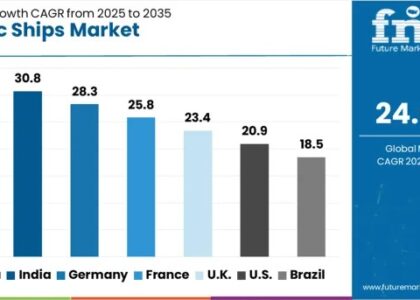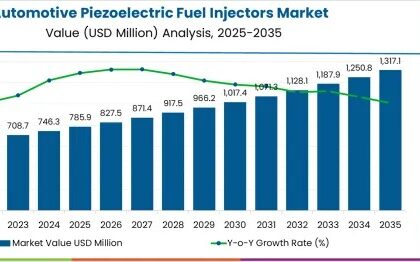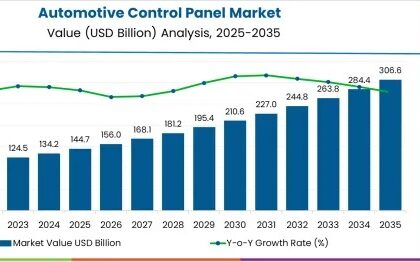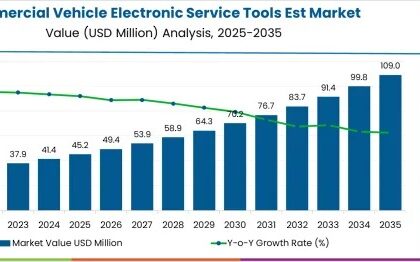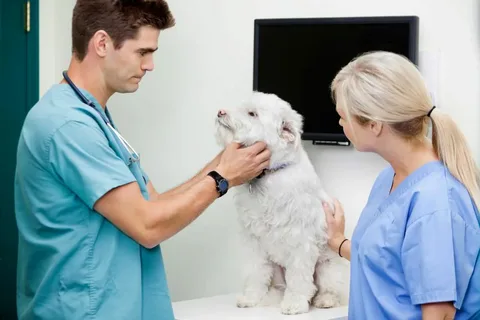
The companion animal drugs market is projected to experience robust expansion, with a forecasted Compound Annual Growth Rate (CAGR) of 4.4%. The market is anticipated to reach an impressive valuation of USD 59.2 billion by the end of 2033, up from USD 36.7 billion recorded in 2022.
This significant growth reflects the increasing investment in veterinary care and the rising awareness among pet owners about the importance of maintaining their animals’ health and well-being. The companion animal drugs market encompasses a wide range of products, including pharmaceuticals for the treatment of diseases, vaccines, and dietary supplements aimed at improving the quality of life for pets.
Examine an Enlightening – Report
A major contributing element to the rise in sales and demand for animal nutrition and behavioral products is the rise in pet adoption. The need for anti-obesity medications has surged dramatically as a result of the rise in pet obesity over the past few years.
The COVID-19 epidemic and the ensuing worldwide shutdown in the first quarter of 2021 contributed to a rise in pet adoptions, especially of dogs and cats. Dog adoption is fairly common, particularly among senior citizens. It is anticipated that this will increase demand for skin care items, pet food, and medicines.
Key Takeaways
- Urbanization and trend of nuclear families have been greatly helpful in increasing market share of companion animal drug market.
- People have started considering pets as their family member and this led to increase in overall expenditure of a family, as a result this benefitted the companion market.
- Increase in rising pet diseases have provided the industry with a positive push to manufacture more companion drugs to meet the demand
- Industrial growth can likely be attributed to a rise food-borne and zoonotic diseases.
- Increase in per capita income of urban population, have enabled people to take better care of their pets by means of diagnosis, vaccination, mitigation, and treatment of diseases such as kidney diseases, heartworms and Lyme diseases, which resulted in giving a boost for companion animal specialty drug market share.
- COVID-19 had a positive impact on pet adoption rate, with a rise of 50% each year
- Technological advancement has been a strong driving factor in market progression of companion animal drug market
Increasing Urbanization and Growing Affluence in Developing Countries to Benefit the Market
Increasing urbanization level and growing affluence, especially in developing countries, have been driving the adoption of pets, thus leading to increased demand for healthcare products for pets such as companion animal drugs. Continued urbanization has also resulted in increasing prevalence of various diseases such as allergies, lower appetite, reduced energy and behavioral anxieties among small companion animals. This has been driving the demand for innovative classes of medicines such as companion animal drugs.
Upcoming Therapeutic Innovations in Pet Care to Aid Market Growth
Besides traditional drugs, animal health companies have also been investing in smart diagnostic care to help prevent diseases before the actual onset. Companies are also trying to develop generic capabilities to demonstrate bioequivalence to reference prescription drugs in the companion animal drugs market, as many key drugs no longer benefit from intellectual property protection. The development of new vaccines and medications for animals are expected to support the growth of the companion animal drugs market over the forecast period.
Increasing R&D activities and shorter drug-lifecycle are playing an important role in the growth of the companion animal drugs market. Innovations in companion animal drugs are easier and sustainable for a longer period of time, while R&D cycle time are shorter (~ three years) in the Companion Animal Healthcare (CAH) industry as compared to human health, ranging between seven and 15 years for other drugs. This increases return on investment in companion animal drugs and leads to faster profits for the market players.
Collaborative Ventures to Promote the Companion Animal Drugs Market Growth
Collaborative ventures such as One Health promotes unification of veterinary and medical sciences, leading to better disease surveillance, control and education, especially for companion animals such as dogs and cats. One Health venture enables identification of alteration in infection travelling patterns. The patterns are changing mostly in case of parasites due to change in climate and increasing host-vector interactions. Some organizations helping in monitoring of One Health in companion animals are Companion Animal Parasite Council and European Scientific Counsel Companion Animal Parasites.
Such ventures are expected to complement the growth of the companion animal drugs market.
Low Awareness of Animal Diseases to Hamper the Companion Animal Drugs Market Growth
In many developing countries, people lack awareness regarding certain serious companion animal diseases as opposed to livestock diseases, which are more regularly monitored. This is primarily true with regards to pet vaccinations, which is a mandatory requirement for up to three years. Additionally, parasitic medications for companion animals and livestock are different. Lack of awareness with regards to differentiation of these medication varieties leads to adverse drug side effects and thus low administration of companion animal medications. Such factors are likely to create a hindrance in the growth of the companion animal drugs market.
Also, majority of animal healthcare drugs have limited scope for patent extension, primarily due to drug portfolios dominated by drugs that have crossed maturity, which in turn is expected to deter the growth of the companion animal drugs market over the forecast period.
Competitive Landscape
Extensive mergers and acquisitions, product portfolios, geographical expansions, and collaborative research initiatives are some of the strategies undertaken by the leading players. Established players in this market have made alliances with different companies to increase their market reach and social media presence. Some well-established players in the US companion animal drug specialty market are:
- Merck Animal Health
- Elanco
- Zoetis
- Vetiquinol S.A.
- Virbac, Inc.
- Norbrook Inc.
- Dechra Pharmaceuticals
- Patterson Companies, Inc.
- Vedco Inc.
- Covetrus
- MWI Animal Health
- Nutramax Laboratories Veterinary Sciences, Inc.
- Ellevet Sciences
Recent Developments
- In 2017, Zoetis emerged as a leading player with the highest share of compassion animal specialty drugs, as the company has a considerable and significant market presence, a diverse portfolio of product offerings, and an acute strategic perspective which includes M&As, such as the acquisition of Abaxis in 2018.
- In July 2019, Zoetis and Colorado state university made an agreement to establish a research lab for the development of immunotherapies for veterinary patients.
- In August 2020, Elanco Animal Health Incorporatedannounced that it has acquired Bayer Animal Health. The transaction was valued at USD 6.89 billion. This development helped the company to expand itself in the durable animal health industry.
Key Players in the Companion Animal Drugs Market:
- Zoetis Inc.
- Merck & Co, Ltd.
- Bayer AG
- Elanco
- Boehringer Ingelheim GmbH (Merial)
- Virbac Animal Health
- Ceva Santè Animale
Key Segments Covered in Companion Animal Drugs Industry Research
Product:
- Antibiotics
- Anti-inflammatory
- Parasiticides
- Heartworm
- Behavioral Products
- Nutritional Products
- Skin Care Products
- Vaccines
Distributional Channel:
- Veterinary Hospitals
- Veterinary Clinics
- Pharmacies and Drug Stores
Region:
- North America
- Latin America
- Europe
- East Asia
- South Asia
- Oceania
- Middle East and Africa (MEA)
A Old Full – Report Analysis
About Future Market Insights (FMI)
Future Market Insights, Inc. (ESOMAR certified, recipient of the Stevie Award, and a member of the Greater New York Chamber of Commerce) offers profound insights into the driving factors that are boosting demand in the market. FMI stands as the leading global provider of market intelligence, advisory services, consulting, and events for the Packaging, Food and Beverage, Consumer Technology, Healthcare, Industrial, and Chemicals markets. With a vast team of over 400 analysts worldwide, FMI provides global, regional, and local expertise on diverse domains and industry trends across more than 110 countries. Join us as we commemorate 10 years of delivering trusted market insights. Reflecting on a decade of achievements, we continue to lead with integrity, innovation, and expertise.
Contact Us:
Future Market Insights Inc.
Christiana Corporate, 200 Continental Drive,
Suite 401, Newark, Delaware – 19713, USA
T: +1-845-579-5705
For Sales Enquiries: sales@futuremarketinsights.com
Website: https://www.futuremarketinsights.com
LinkedIn| Twitter| Blogs | YouTube


